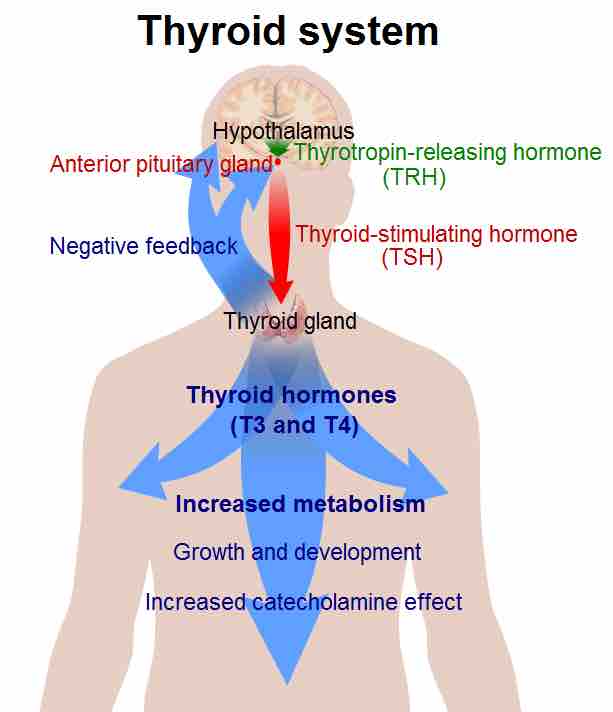In vertebrates, the thyroid gland is one of the largest endocrine glands. It is found in the neck, below the thyroid cartilage that forms the laryngeal prominence, or Adam's apple. The isthmus (the bridge between the two lobes of the thyroid) is located inferior to the cricoid cartilage.
The thyroid gland controls how quickly the body uses energy, makes proteins, and controls how sensitive the body is to other hormones. It participates in these processes by producing thyroid hormones, the principal ones being triiodothyronine (T3) and thyroxine (sometimes referred to as tetraiodothyronine (T4)).
These hormones regulate the rate of metabolism and affect the growth and rate of function of many other systems in the body. T3 and T4 are synthesized from both iodine and tyrosine.
The thyroid also produces calcitonin, which plays a role in calcium homeostasis. The hormonal output from the thyroid is regulated by thyroid-stimulating hormone (TSH) produced by the anterior pituitary, which itself is regulated by thyrotropin-releasing hormone (TRH) produced by the hypothalamus .

Thyroid system
Thyroid function is regulated by the actions of the hypothalamus and pituitary gland.
Anatomy of the Thyroid Gland
The thyroid gland is a butterfly-shaped organ and is composed of two cone-like lobes or wings, lobus dexter (right lobe) and lobus sinister (left lobe), connected via the isthmus. The organ is situated on the anterior side of the neck, lying against and around the larynx and trachea, reaching posteriorly the oesophagus and carotid sheath.
It starts cranially at the oblique line on the thyroid cartilage (just below the laryngeal prominence, or Adam's Apple), and extends inferiorly to approximately the fifth or sixth tracheal ring. It is difficult to demarcate the gland's upper and lower border with vertebral levels because it moves in position in relation to these structures during swallowing.